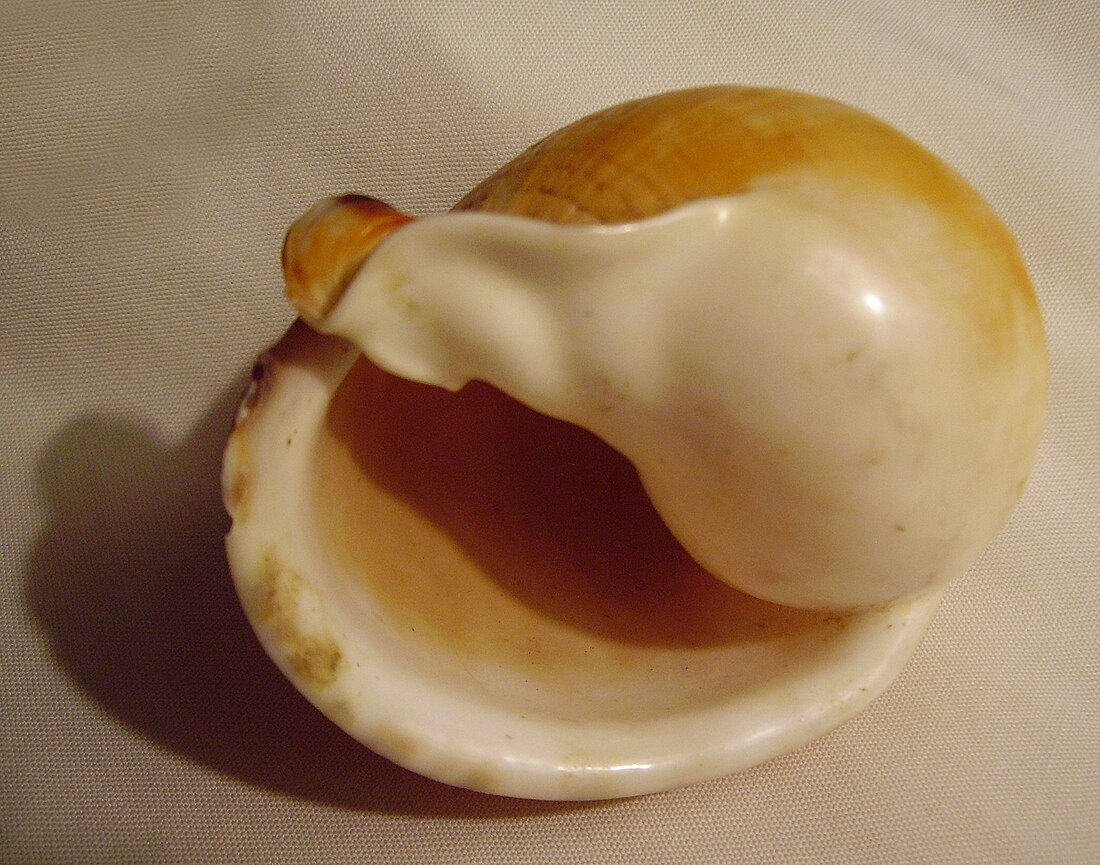Top Qs
Timeline
Chat
Perspective
Parietal callus
Shell anatomy of some groups of snails From Wikipedia, the free encyclopedia
Remove ads
A parietal callus is a feature of the shell anatomy of some groups of snails, i.e. gastropods. It is a thickened calcareous deposit which may be present on the parietal wall of the aperture of the adult shell. The parietal wall is the margin of the aperture and part of the wall of the body whorl that is closest to the columella. The callus is often smooth and glossy, but can also be decorated with raised ribs or wrinkles.[citation needed]


This feature is found in such marine families as Ranellidae (pictured), Cassidae, Nassariidae, Ringiculidae and others. It is also found in some families of land snails, terrestrial pulmonates.[citation needed]
The callus is often "glazed", to help the animal slide in and out of the shell more easily.[1]
When the callus covers of 50% of the surface area of the ventral part of the shell, it is called an "extreme parietal callus".[2]
Remove ads
See also
References
Wikiwand - on
Seamless Wikipedia browsing. On steroids.
Remove ads
